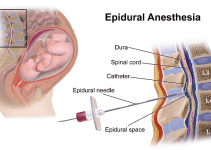Pregnancy should bring happiness and delight. However, it also causes anxiety, particularly in those who are pregnant for the first time. Many questions come to the mind, and there is a constant fear about what is going inside the belly.
 To an extent, such a concern is justified; after all, the development of a child is quite a complicated process. Not all pregnancies indeed end up well, but most do.
To an extent, such a concern is justified; after all, the development of a child is quite a complicated process. Not all pregnancies indeed end up well, but most do.
The good news is that studies or global data show that perhaps most pregnant ladies have not much to worry about. Although miscarriages are not uncommon, congenital disabilities are rare.
Studies show that miscarriages can occur, and in fact, one in 8 pregnancies end up with miscarriage. However, the good news is that recurrent miscarriages are in less than 1% of cases. Fortunately, severe congenital abnormalities are also uncommon, affecting less than 1% of all pregnancies, and most of them will get diagnosed during neonatal screening [1–3].
How does the pregnant belly feel?
It is vital to understand that all pregnant ladies differ, and even each successive pregnancy in the same women may differ a lot. Thus, the look and shape of the belly, its hardness or softness, depends on many factors. The most important factors to consider are the physical built or shape of the women and age. Generally, women are better prepared for consecutive pregnancies.
Most women, especially those living with some extra pounds, will not feel much change in the belly in the first trimester, as the child is still very small. One may start seeing changes in the belly from the second trimester onwards.
Obese ladies may not see much difference even in the second trimester. By the third trimester, when the child is quite big, most ladies will start seeing the change in the belly’s shape and consistency.
Generally, the belly is soft as usual in the first trimester, with minimal changes. However, from the second trimester, it may become a bit hard, but not very hard. During the second trimester, somewhere between 18 to 20 weeks, most women will feel baby movements.
It also means that the tummy will be stiffer in the second half of pregnancy, as the womb increases in size and stretches the abdominal skin, making it less soft and tight. In some women, the belly may become quite hard, and they may develop stretch marks.
Overall, the softness of hardness of the belly may not provide much information. However, monitoring these changes may help. Changes in belly softness or hardness, combined with other signs, may help women understand few things better about pregnancy and child’s health.
Everyone grows differently, but keeping an eye on the belly may help
First and foremost, one should stay calm. One should not make any conclusions just by feeling the stiffness, softness, hardness, or shape of the belly. After all, most women these days have access to prenatal care and neonatal screening. Moreover, qualified, experienced, and well-equipped specialists can be a much better source of information.
Nevertheless, understanding a few things may help. Knowing how the belly must look or feel may help get timely attention, which may be vital in many cases. So below are a few different kinds of bellies and what they may means.
The belly is still soft and small. Well, that may say about many things like an early gestational age, dietary issues, and slow growth of a child. During pregnancy, especially from the second trimester and onwards, it is a good idea to measure the belly regularly. ¸
It is also vital not to engage in strenuous exercises, as strong abdominal muscles may somewhat hamper the growth.
The belly is very large and soft. Again, lots will depend on the physical built. Belly may look extraordinarily large on a tiny woman. Further, during the second pregnancy, the tummy may become a large earlier and may feel softer as the uterus expands more easily.
Very rarely, the extra-large belly may be caused by a condition called polyhydramnios, a condition when there is excessive amniotic fluid.
Carrying high as if you swallowed a football and feels not very soft. Well, this is not rare, and it happens due to the position of a child. It may indicate that child’s feet are below, and the head is toward the upper side and poking towards the front wall of the uterus.
In most cases, it is not a cause of concern, as the child’s position changes later, although some women may need medical attention (to prevent breech position). Such a shape of the belly, by no means, tell the gender of the child, as many believe.
Some mothers may carry too low, and the belly may feel a bit harder towards the lower side. It is more common in those who have given birth earlier. In such women, muscles are a bit loose, and the belly shape differs.
The belly is too wide and soft on one side and harder on another side. It may indicate that baby is in a transverse lie. It is not a cause for concern in most cases, as a baby will change the position before birth.
Some women may require correction with the help of a specialist. In very rare cases, the position may not change, requiring cesarean.
To sum up, the shape and consistency of the belly may provide some information. However, this information, by no means, is reliable and should not be used for self-diagnosis or making specific conclusions.
All pregnant women must get timely prenatal care, should have neonatal screening to ensure a worry-free pregnancy.
References
- Mashhadi Abdolahi H, Kargar Maher MH, Afsharnia F, Dastgiri S. Prevalence of Congenital Anomalies: A Community-Based Study in the Northwest of Iran. ISRN Pediatrics. 2014;2014:e920940. doi:https://doi.org/10.1155/2014/920940
- Miscarriage. NHS.uk. Published March 6, 2018. Accessed January 29, 2021. https://www.nhs.uk/conditions/miscarriage/
- WHO factsheet. Congenital anomalies. Published December 1, 2020. Accessed January 29, 2021. https://www.who.int/news-room/fact-sheets/detail/congenital-anomalies




 Dr. Preet Pal SB is a physician (M.D. Medicine) with a specialization in diabetes (Fellowship in diabetes, Royal Liverpool Academy). He has a particular interest in metabolic disorders, considering that they are rising in every corner of the world, more so in India.
Dr. Preet Pal SB is a physician (M.D. Medicine) with a specialization in diabetes (Fellowship in diabetes, Royal Liverpool Academy). He has a particular interest in metabolic disorders, considering that they are rising in every corner of the world, more so in India.